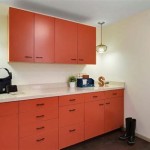Essential Aspects of Using Primer Before Painting Kitchen Cabinets
When embarking on the transformative journey of painting kitchen cabinets, one crucial question arises: is it necessary to apply primer before painting? In this guide, we delve into the fundamental aspects of primer usage, helping you make an informed decision that will enhance the outcome of your project.
Benefits of Using Primer
Primer plays a vital role in the success of a paint job. Here are its key benefits:
- Improves paint adhesion: Primer creates a bond between the cabinet surface and the paint, ensuring that the paint adheres properly and resists chipping or peeling.
- Enhances color coverage: Primer provides a uniform base, hiding imperfections and allowing the paint color to go on smoother and more evenly.
- Blocks stains and odors: Primer acts as a barrier, preventing stains or odors from bleeding through the paint.
Types of Primers
There are various types of primers available, each suited for specific applications. For kitchen cabinets, the following primers are typically recommended:
- Oil-based primer: Provides excellent adhesion and durability, making it ideal for kitchen cabinets that experience high wear and tear.
- Latex primer: Water-based and easy to apply, latex primer is a good choice for cabinets with a smooth surface.
- Shellac primer: A fast-drying, stain-blocking primer suitable for cabinets with minor imperfections or previous finishes.
When Primer is Essential
Primer is particularly important in the following situations:
- Changing colors drastically: If you're painting your cabinets a significantly different color than their current shade, primer will help prevent the old color from showing through.
- Painting over glossy or greasy surfaces: Glossy or greasy cabinets require a primer to create a surface that paint can adhere to effectively.
- Covering stains or odors: Primer can seal in stains or odors, preventing them from affecting the paint finish.
When Primer May Not Be Necessary
In some cases, primer may not be necessary, such as when:
- Painting over a similar color: If you're only making slight changes to the cabinet color, primer may not be crucial.
- Cabinets are in good condition: If your cabinets are already in good shape, a light sanding may be sufficient before painting.
Conclusion
Whether or not to use primer before painting kitchen cabinets depends on the specific circumstances of your project. If you're unsure, it's always a good idea to consult with a professional painter or do a test area to determine if primer is necessary. Using primer in the appropriate situations will significantly enhance the durability, appearance, and longevity of your painted kitchen cabinets.

What You Need To Know Before Painting Cabinets The Palette Muse

How To Paint Kitchen Cabinets A Step By Guide Confessions Of Serial Do It Yourselfer

How To Paint Kitchen Cabinets Without Sanding Or Priming

Refinish Kitchen Cabinets With Kilz Restoration Primer

How To Prime Cabinets For A Smooth Finish The Turquoise Home

Painting Kitchen Cabinets Without Primer

How To Clean Prep Wood Kitchen Cabinets Before Painting Do Dodson Designs

Avoid These Mistakes How To Paint Cabinets That Are Already Painted Grace In My Space

How To Paint Kitchen Cabinets A Step By Guide Confessions Of Serial Do It Yourselfer

How To Paint Kitchen Cabinets A Step By Guide Confessions Of Serial Do It Yourselfer
Related Posts








